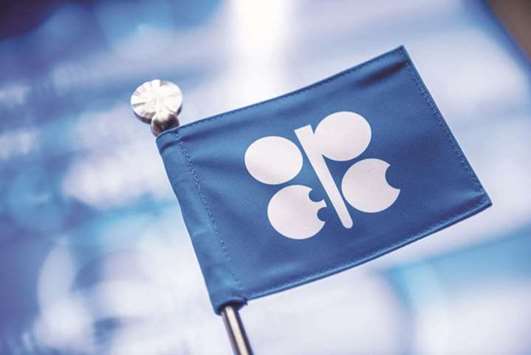Opec and its allies may be denied a “happy” 2018 as their success in clearing a global oil glut falters, the International Energy Agency predicted.
By cutting production, the Organization of Petroleum Exporting Countries and Russia have managed to reduce oil inventories to the lowest in two years, the IEA said. Yet new supply from their competitors, led by US shale drillers, might grow faster than fuel demand next year, thwarting Opec’s efforts to drain what remains of a global surplus.
“On our current outlook, 2018 may not necessarily be a happy New Year for those who would like to see a tighter market,” said the Paris-based IEA, which advises most major economies on energy policy. “Total supply growth could exceed demand growth.”
Oil prices climbed above $65 a barrel in London this week for the first time since 2015 as the shutdown of a crucial North Sea pipeline followed the November 30 decision of Opec and its partners to press on with supply curbs until the end of next year. The price recovery is energising one of Opec’s biggest competitors, the US shale industry, which is delivering the biggest surge in oil and gas supply in history.
The report showed that Opec’s strategy has paid off so far. Oil inventories in developed nations, the group’s key metric for assessing oversupply, have fallen to their lowest since July 2015, at 2.94bn barrels, after a further decline in October. Opec members stepped up their implementation of promised supply curbs in November to 115%, the highest rate since the agreement began, according to the IEA.
The agency also boosted its global oil demand assessments for 2016 through 2018, meaning that the amount of crude needed from Opec next year is 100,000 barrels a day higher than previously thought, at 32.5mn a day.
However, as that’s in line with Opec’s recent levels, the market will be “closely balanced” next year, with no overall change in stockpiles, the report showed. In contrast, inventories have declined this year at a rate of 500,000 barrels a day.
The agency bolstered forecasts for growth in supplies outside the group next year, by 200,000 bpd. The additional 1.6mn bpd of non-Opec supply is poised to exceed growth in global oil consumption of 1.3mn bpd in 2018. The US will account for about 75% of new oil supplies.

By cutting production, Opec and Russia have managed to reduce oil inventories to the lowest in two years, the IEA said
